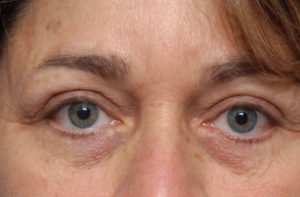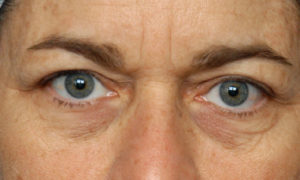An essential part of facial rejuvenation is the upper one-third of the face, the brows and the forehead. Browlifting historically was done by using an incision across the top of the scalp, otherwise known as a coronal browlift. While this is a highly effective browlifting method (and still the gold standard), there are tradeoffs for using it including a permanent scalp scar and numbness of the scalp. Not only do some patients not want these tradeoffs but long foreheads with high hairlines in women (they will get higher and longer after)and almost all men (due to hair density) are not good candidates.

The alternative of an endoscopic browlift, instead of a coronal browlift, has been popularized over the past fifteen years. It is probably used more today than the coronal browlift due to its greater acceptance because it doesn’t use a long scalp incision but several small incisions. It also does not cause permanent scalp numbness.
All of these methods of browlifting can produce significant elevation of the brow, although my experience is that the amount of brow elevationwith an endoscopic browlift is somewhat less than any of the scalp incision methods. The lack of a permanent scalp scar makes this tradeoff very acceptable however and really eliminates the fear, or possibility, of an over elevated brow or the ‘deer in the headlights’ look. Because of the way endoscopic vs scalp browlifts work (shifting back vs removing skin or scalp), I have found that some each type works better for certain patients. Patients with moderately low brows, thin skin and not too many forehead wrinkles and frown lines do really well with the endoscopic browlift approach. Patients with thick forehead skin, low hanging brows, and a lot of muscle activity and wrinkles are better off with either of the scalp browlifting methods.
Men pose unique browlift problems due to their lack of good scalp hair in most cases. For this reason, browlift surgery in men is often done either endoscopically or through the upper eyelid, known as the transpalpebral browlift. By going through the upper eyelid, all scalp incisions are avoided. This approach usually produces just a subtle browlift which is what most men want anyway. Often a small resorbable device is fixed to the bone to hold the brows up as they heal. While this same approach can be used for women, most women want or need a more significant amount of brow elevation.
These three approachs allow browlifting to be tailored to each patient’s unique forehead and scalp anatomy and their desires. Contrary to the perception of some, there is no one best way to do a browlift.
Dr. Barry Eppley
Indianapolis, Indiana



